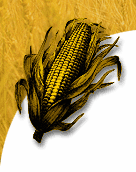By Charles Francis
Prairie Writers Circle
(Tuesday, Nov. 11, 2003 -- CropChoice guest commentary) -- Humans are among the most widely adapted species on earth, living successfully from the hot tropics to the frigid arctic tundra. We have used our intelligence and cleverness to make a living in an amazing range of habitats.
Each place puts limits on how we raise our food. The growth of agriculture and population in the tight quarters of Europe inspired a conservation ethic that ensured land converted to farming would not be squandered. Farmers recycled nutrients through the use of livestock manure, crop rotations and green manure crops. They made every spare corner of usable land count for crops or forage.
But when these same people beheld what must have seemed an inexhaustible treasure of resources in North America, they saw little need for conservation. Unfortunately, they didn't see far enough.
Many of the Europeans who settled the upper Midwest, for example, came from Scandinavia , where marginal soil, rocks and lakes make farming difficult. But farm they did. Those from eastern Finland left boggy areas where drainage tiles or ditches must be built as close as every 16 feet.
In Wilhem Mobergís four-book series, "The Immigrants," Swedish farmers arriving in Minnesota were astounded to see their countrymen cutting trees four feet above the ground. In the old land, timber was cut at or below ground level, making full use of the wood and clearing as much land as possible to farm. In the new country, there was plenty of timber and enough land to easily farm around the stumps and let them rot.
And with them rotted the old conservation ethic.
But now there is no more homestead land to give away. And the soil, built over millions of years to make this relatively new nation rich, erodes to the sea. Large areas of the Corn Belt have lost half their topsoil in a century and a half of farming.
What remains lacks its natural, self-generating and sustainable fertility. As a temporary fix to this soil decline, farmers spread synthetic fertilizers derived from fossil fuels. About 11 million tons of synthetic nitrogen is applied yearly in the United States, according to the U.S. Geological Survey.
Fossil fuels will not last forever, and as they grow harder to obtain, their price will rise, eventually making synthetic fertility impractical.
Meanwhile, chemical pesticides accelerate development of resistance by weeds and insects, sicken our farmers, poison our soil and pollute our water.
Letís look back to Europe, where more farmers still embrace the conservation ethic. Agricultural land there is strictly identified and protected for food production, not subdivisions and commercial development. Government programs promote conservation through subsidies for organic food production and other ecological practices. Countries have national goals of 10 to 15 percent organic production, which shuns synthetic fertility and chemical pesticides, within the next decade.
Denmark has even considered the idea of converting the entire country to organic production and now has a goal of 20 percent organic within a decade. In contrast, the U.S. food system today is only 1.5 percent organic.
Looking beyond immediate concerns, we should apply our intelligence to the long but necessary work of making agriculture more nearly follow nature. In the future, we need to develop beneficial mixtures of perennial plants, including grain crops, that do not require reseeding every year. This would eliminate annual tillage, effectively ending soil erosion. Pesticide pollution would decline as the need for artificial pest control falls, since these mixtures would mimic nature's way of controlling weeds and pests. And finally, perennial agriculture would employ nature to preserve soil fertility, reducing the need for synthetic fertilizers.
We must recognize that the New World, as well as the Old, has limits. We should use our collective intelligence and re-embrace the conservation ethic of our European forebears.
###
Charles Francis, professor of agronomy and horticulture at the University of Nebraska-Lincoln, is a member of the Prairie Writers Circle at the Land Institute in Salina , Kan.



